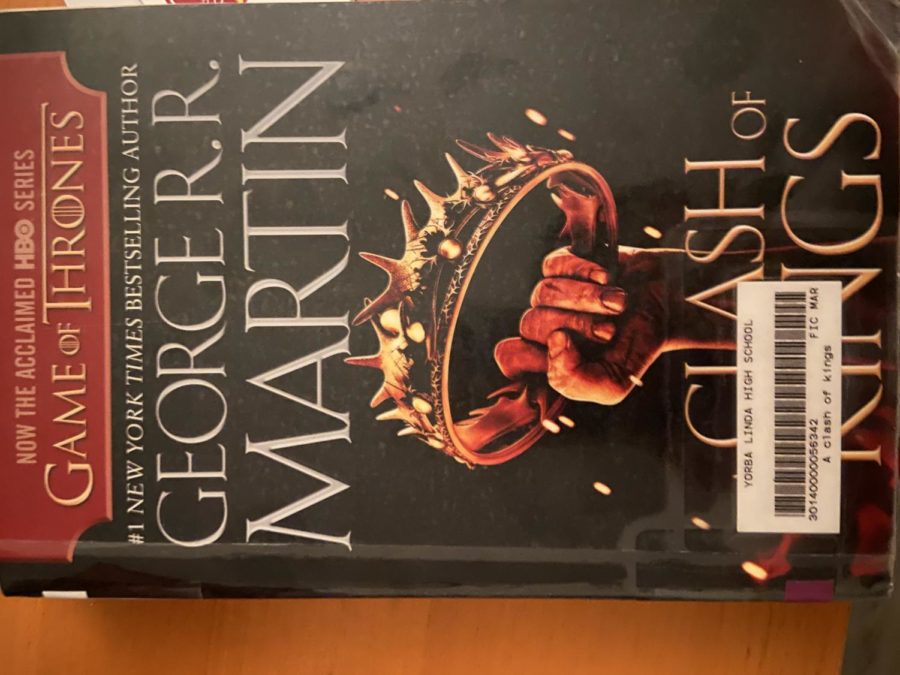What Happened to Reading?
George R.R. Martin’s A Clash of Kings transports its readers to a fantasy Medieval world of knights, kings, and dragons.
November 29, 2021
Reading was childhood, and childhood was reading. In the early years of elementary school, students hopped, skipped, or ran to the library, laughing or shouting all the way, settling into bean bag chairs and giggling behind rows of weathered books piled neatly on the shelves. The Scholastic book fair, showcasing a collection of hundreds of books and neat children’s gadgets, was seen as a Field Day for book lovers.
In books, there is always something for everyone. Yet, despite the popularity of reading during the younger years, for most high school students reading books have almost entirely been restricted to assigned classics in English classes or textbook reading assignments. What happened to reading for fun? How can we reintroduce that nostalgic passion?
The first answer lies in finding the right book. Assigned classics in English class are often bemoaned by students because Homer, Shakespeare, and Sophocles do not capture the attention and interests of their readers to the same extent that a fun comic like Calvin and Hobbes might do. Percy Jackson and his ragtag demigod entourage are easier and more entertaining to follow behind compared to Ralph and Piggy in Lord of the Flies, a book which forces readers to peruse even deeper to uncover subtle literary devices buried under the text — usually as part of an assignment.
Not only that, but readers are most willing to read books that they find captivating, fulfilling, and easily understandable. It’s imperative to focus less on the reading levels of books but on the content of the pages. In short, reading should be an activity that entertains, and oftentimes the entrance to enjoying reading is to find what niche of the reading world most captivates the reader.
Mrs. St. Amant (Staff), who teaches AP English Literature on campus, gives suggestions on how to find an enjoyable book. “Read the first pages and the back synopsis of a book, and then usually you can tell if it’s a book you’ll be interested in. But if you don’t like it, immediately switch to something else,” she says. “It’s not a marriage.”
The Washington Post considers the second and third grades as when children peak in interest for reading. So what causes the sharp decline into middle school and high school? One answer is less time. Sports, studies, and increasing extra-curricular activities ramp up during the older years, and often kids simply feel as if they don’t have enough time to carve out their day to read books in their free time. There is also an increasing pressure to perform, whether it be in the high levels of sports or in class.
The biggest answer to a decline in reading interest, though, is the lure of technology. Kids often receive their first devices as they enter their teenage years and emerge from adolescence, contributing to more usage of social media. Social media is widely used among high school students, who might spend hours scrolling Instagram feeds or finding entertainment through short TikTok reels. This can absorb a lot of time, contributing even more to a “time shortage” which leaves little space for recreational reading.
Mrs. St. Amant attests to the benefits of reading. “Not only does reading help you become a better reader and writer, you learn about the world as well and hear about other people’s stories. If you’re a teenager in Yorba Linda, with a book you might be a woman in Afghanistan, or an immigrant in El Salvador.”
Reading is an activity that brings an audience into the mind and imagination of an author, offering an invisible plane ticket into another world. With the right book and the right will, reading can be enjoyable again.





































